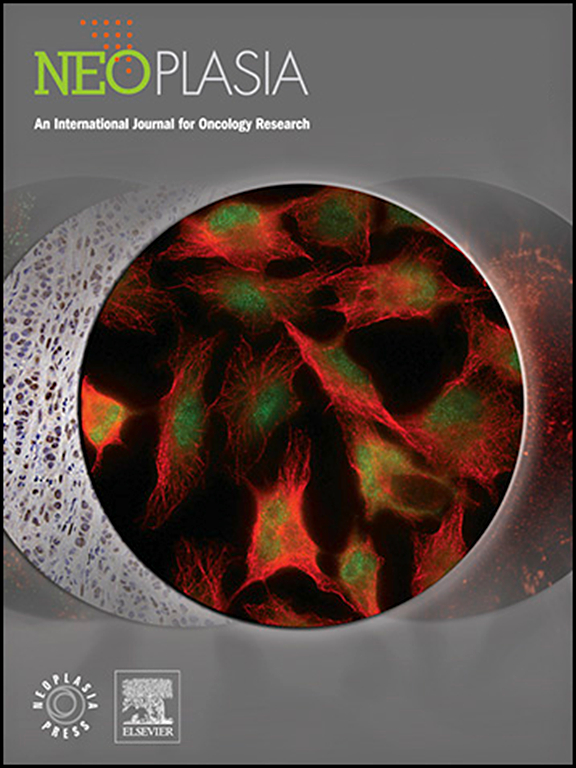糖酵解在肿瘤发生中的作用:从生物学方面到治疗机会。
IF 4.8
2区 医学
Q1 Biochemistry, Genetics and Molecular Biology
引用次数: 0
摘要
糖酵解代谢产生能量和中间产物,用于生产生物质。与正常组织相比,肿瘤相关的糖酵解在肿瘤细胞自主或非自主刺激下上调。这种上调的后果有两个方面。首先,糖酵解的代谢作用超过氧化代谢作用。其次,糖酵解途径的过表达成分(即酶或代谢物)获得了与其代谢作用无关的新功能,这些功能被称为 "月光 "功能。这些功能包括诱导突变和其他肿瘤诱发事件、对癌症干细胞的影响、诱导增加肿瘤蛋白的表达和/或活性、表观遗传和转录修饰、绕过衰老和诱导增殖、促进 DNA 损伤修复和防止 DNA 损伤、抗凋亡作用、抑制药物流入或增加药物流出。代谢功能的上调和新的非代谢功能的获得会导致支持肿瘤发生的生物效应:促进肿瘤的发生、刺激肿瘤细胞增殖和原发性肿瘤的生长、诱导上皮-间质转化、自噬和转移、免疫抑制效应、诱导耐药性以及对肿瘤附属细胞的影响。这些作用对肿瘤患者的预后产生了负面影响。有鉴于此,肿瘤相关糖酵解成为抗肿瘤药物研发的关注目标也就不足为奇了。然而,迄今为止,糖酵解抑制剂的临床效果并不尽如人意。在这篇综述中,我们提出了一些方法,可以绕过迄今为止在使用糖酵解抑制剂进行治疗时遇到的一些困难。本文章由计算机程序翻译,如有差异,请以英文原文为准。
The role of glycolysis in tumorigenesis: From biological aspects to therapeutic opportunities
Glycolytic metabolism generates energy and intermediates for biomass production. Tumor-associated glycolysis is upregulated compared to normal tissues in response to tumor cell-autonomous or non-autonomous stimuli. The consequences of this upregulation are twofold. First, the metabolic effects of glycolysis become predominant over those mediated by oxidative metabolism. Second, overexpressed components of the glycolytic pathway (i.e. enzymes or metabolites) acquire new functions unrelated to their metabolic effects and which are referred to as “moonlighting” functions. These functions include induction of mutations and other tumor-initiating events, effects on cancer stem cells, induction of increased expression and/or activity of oncoproteins, epigenetic and transcriptional modifications, bypassing of senescence and induction of proliferation, promotion of DNA damage repair and prevention of DNA damage, antiapoptotic effects, inhibition of drug influx or increase of drug efflux. Upregulated metabolic functions and acquisition of new, non-metabolic functions lead to biological effects that support tumorigenesis: promotion of tumor initiation, stimulation of tumor cell proliferation and primary tumor growth, induction of epithelial-mesenchymal transition, autophagy and metastasis, immunosuppressive effects, induction of drug resistance and effects on tumor accessory cells. These effects have negative consequences on the prognosis of tumor patients. On these grounds, it does not come to surprise that tumor-associated glycolysis has become a target of interest in antitumor drug discovery. So far, however, clinical results with glycolysis inhibitors have fallen short of expectations. In this review we propose approaches that may allow to bypass some of the difficulties that have been encountered so far with the therapeutic use of glycolysis inhibitors.
求助全文
通过发布文献求助,成功后即可免费获取论文全文。
去求助
来源期刊

Neoplasia
医学-肿瘤学
CiteScore
9.20
自引率
2.10%
发文量
82
审稿时长
26 days
期刊介绍:
Neoplasia publishes the results of novel investigations in all areas of oncology research. The title Neoplasia was chosen to convey the journal’s breadth, which encompasses the traditional disciplines of cancer research as well as emerging fields and interdisciplinary investigations. Neoplasia is interested in studies describing new molecular and genetic findings relating to the neoplastic phenotype and in laboratory and clinical studies demonstrating creative applications of advances in the basic sciences to risk assessment, prognostic indications, detection, diagnosis, and treatment. In addition to regular Research Reports, Neoplasia also publishes Reviews and Meeting Reports. Neoplasia is committed to ensuring a thorough, fair, and rapid review and publication schedule to further its mission of serving both the scientific and clinical communities by disseminating important data and ideas in cancer research.
 求助内容:
求助内容: 应助结果提醒方式:
应助结果提醒方式:


